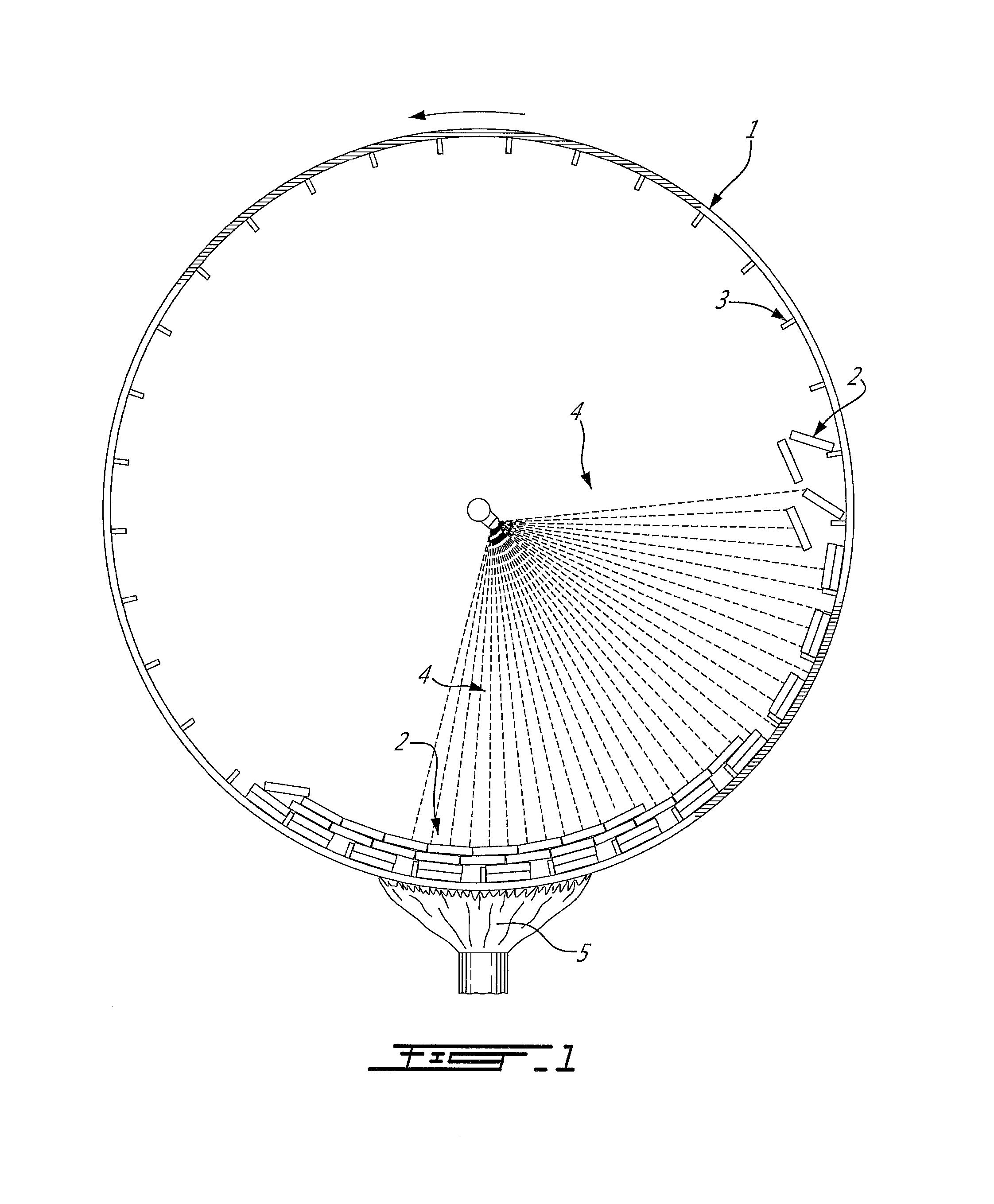Mobile plant for thermally treating a contaminated or uncontaminated feed stream, processes thereof and uses of products thereof
a technology for thermal treatment and feed streams, which is applied in the direction of hydrocarbon oil treatment products, vapor condensation, separation processes, etc., can solve the problems of wasting hydrocarbon resources, affecting the environment, and burning of oily residues, so as to reduce the volume of oil, reduce the cost of transporting oils, and reduce the effect of waste oil transpor
- Summary
- Abstract
- Description
- Claims
- Application Information
AI Technical Summary
Benefits of technology
Problems solved by technology
Method used
Image
Examples
example 1
[0352]Refer to Table 1—Example 1 for a summary of the operating conditions and feed and products rates and analyses. The waste oil streams tested contained used lubricating oils as well as other oily streams such as metal working oils, transmission fluids, greases, form oils, and any number of unknown waste oil streams.
Reactor Size:L = 1.07 m, Diameter 0.47 mReactor Temperature:490 C.Reactor Pressure:124 KPa(a)Sweep Gas:Steam @ 5% Weight on FeedHeavy Oil Recycle:NoneOil Feed Rate:16 L / hCokeTestMethodUnitsFeed OilGasNaphthaGasoilHeavy Oil& SolidsWeight % on Dry Oil Feed1005.38.056.520.69.6Density @ 15 C.ASTM D4052g / ml0.890.7580.8660.9331.4Molecular Weightg / mole36.7Water (1)STM D1533Volume %5.70.7MetalsDigestion & ICP-ISppm Weight2160324025550SulphurLECO S32Weight %0.630.00370.050.260.912.63HalogensOxygen Bomb Combustionppm Weight47019284.35219Viscosity @ 40 C.ASTM D445cSt33.62.1177.1Copper Strip CorrosionASTM D1201aSedimentsASTM D2276mg / ml0.50.05Flash PointASTM D92C.12848CCRD189Weigh...
example 2
[0357]Please refer to the Table 2, Example 2 for a summary of the operating conditions and feed and products rates and analyses.
TABLE 2Example 2Reactor Size:L = 1.07 m, Diameter 0.47 mReactor Temperature:500 C.Reactor Pressure:125 KPa(a)Sweep Gas:NoneHeavy Oil Recycle:NoneOil Feed Rate:16 L / hCokeTestMethodUnitsFeed OilGasNaphthaGasoilHeavy Oil& SolidsWeight % on Dry Oil Feed1009.811.246.822.69.6Density @ 15 C.ASTM D4052g / ml0.8930.7580.8650.9331.4Molecular Weightg / mole37.4WaterSTM D1533Volume %0.7MetalsDigestion & ICP-ISppm Weight21603Not Done25510SulphurLECO S32Weight %0.63Not Done0.050.260.912.63HalogensOxygen Bomb Combustionppm Weight470192855219Viscosity @ 40 C.ASTM D445cSt33.62.177.1Copper Strip CorrosionASTM D1201aSedimentsASTM D2276mg / ml0.50.05Flash PointASTM D92C.12848CCRASTM D189Weight %3.341.01AshASTM D4422 & ASTM D482Weight %0.40.010.057.43pHDistillationASTM D2887Weight %IBPC.1623015033810%C.2464717837450%C.4149825543690%C.528133343525EPC.592157589
[0358]The waste oil strea...
example 3
[0362]Please refer to the Table 3—Example 3 for a summary of the operating conditions and feed and products rates and analyses.
TABLE 3Example 3Reactor Size:L = 1.07 m, Diameter 0.47 mReactor Temperature:495 C.Reactor Pressure:125 KPa(a)Sweep Gas:NoneHeavy Oil Recycle:NoneOil Feed Rate:24 L / hCokeTestMethodUnitsFeed OilGasNaphthaGasoilHeavy Oil& SolidsWeight % on Dry Oil Feed1000.611.954294.5Density @ 15 C.ASTM D4052g / ml0.8890.7520.8620.9319.0Molecular Weightg / mole37.6WaterSTM D1533Volume %0.7MetalsDigestion & ICP-ISppm Weight86.90.0461(1)SulphurLECO S32Weight %0.630.030.260.882.63HalogensOxygen Bomb Combustionppm Weight47019084.545.2219Viscosity @ 40 C.ASTM D445cSt33.61.8966.3Copper Strip CorrosionASTM D1203bSedimentsASTM D2276mg / ml0.140.60.05Flash PointASTM D92C.12841222 (OC)CCRD189Weight %3.340.87AshASTM D4422 & ASTM D482Weight %0.40.057.43pH4.32DistillationASTM D2887Weight %IBPC.1623014433810%C.2464517236850%C.4149425143190%C.528126335518EPC.592146400588Note:(1) Metals in the coke...
PUM
| Property | Measurement | Unit |
|---|---|---|
| Fraction | aaaaa | aaaaa |
| Fraction | aaaaa | aaaaa |
| Fraction | aaaaa | aaaaa |
Abstract
Description
Claims
Application Information
 Login to View More
Login to View More - R&D
- Intellectual Property
- Life Sciences
- Materials
- Tech Scout
- Unparalleled Data Quality
- Higher Quality Content
- 60% Fewer Hallucinations
Browse by: Latest US Patents, China's latest patents, Technical Efficacy Thesaurus, Application Domain, Technology Topic, Popular Technical Reports.
© 2025 PatSnap. All rights reserved.Legal|Privacy policy|Modern Slavery Act Transparency Statement|Sitemap|About US| Contact US: help@patsnap.com



